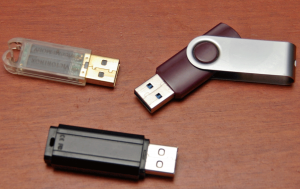 USB 3.1 is the next great advance for computer, mobile and peripheral interconnects. It promises to bring faster speeds and more flexibility in terms of cables and power. While the standard has been ratified for a while now, the actual products using the new standard are really just starting to make it to market. The thing is that these first products using the new interface can have vastly different performance and features yet all still be called USB 3.1. As a result, consumers need to be extra careful when they buy products that are stated to support USB 3.1. Find out the differences between them and what to look for. Continue reading
USB 3.1 is the next great advance for computer, mobile and peripheral interconnects. It promises to bring faster speeds and more flexibility in terms of cables and power. While the standard has been ratified for a while now, the actual products using the new standard are really just starting to make it to market. The thing is that these first products using the new interface can have vastly different performance and features yet all still be called USB 3.1. As a result, consumers need to be extra careful when they buy products that are stated to support USB 3.1. Find out the differences between them and what to look for. Continue reading
USB Security Flaw Released In the Wild
 USB has been incredibly useful for consumers and manufacturers alike. The standardized interface makes it incredibly easy to connect just about any type of peripheral to your computer. It has become so ubiquitous that there are hardly any peripherals to don’t feature it. One of the biggest uses for it is for external storage either through a hard drive or a flash memory stick. But what if I told you that you should be extremely careful because plugging an unknown USB device into your computer could infect it with a virus or malware? That is precisely the problem that computer users are now facing with a flaw that has been named . Continue reading
USB has been incredibly useful for consumers and manufacturers alike. The standardized interface makes it incredibly easy to connect just about any type of peripheral to your computer. It has become so ubiquitous that there are hardly any peripherals to don’t feature it. One of the biggest uses for it is for external storage either through a hard drive or a flash memory stick. But what if I told you that you should be extremely careful because plugging an unknown USB device into your computer could infect it with a virus or malware? That is precisely the problem that computer users are now facing with a flaw that has been named . Continue reading
USB Set to Be Upgraded With New Speeds and Connnectors
 USB 3.0 or SuperSpeed as the standards group calls it was a huge improvement over the past USB 2.0 standards. This was particular true for two aspects of the interface. First it was much faster than the previous USB 2.0. The move from 480Mbps to 4.8 Gbps was a ten fold improvement in the data rate and was particularly welcome for improved transfer rates with external storage devices. In addition to higher speeds, the USB 3.0 interface also improved the power capabilities. Previous ports were restricted to just 500mAh while the new standard went up to 900mAh. This greatly help on those devices that used the USB ports for power. Even with these improvements, the standards group is getting set to introduce USB 3.1 next year.
USB 3.0 or SuperSpeed as the standards group calls it was a huge improvement over the past USB 2.0 standards. This was particular true for two aspects of the interface. First it was much faster than the previous USB 2.0. The move from 480Mbps to 4.8 Gbps was a ten fold improvement in the data rate and was particularly welcome for improved transfer rates with external storage devices. In addition to higher speeds, the USB 3.0 interface also improved the power capabilities. Previous ports were restricted to just 500mAh while the new standard went up to 900mAh. This greatly help on those devices that used the USB ports for power. Even with these improvements, the standards group is getting set to introduce USB 3.1 next year.
Rather than a major version jump, the SuperSpeed+ as they are referring to it is a minor revision, hence the 3.1 version number. Once again, speed and power are the two major goals in the new version. Instead of a ten fold increase in speeds, the new standard will essentially double the speed to 10Gbps. This is going to be most beneficial for those peripherals with extremely high data rates such as high speed storage such as solid state drives or even for video signals. The power should also increase slightly over the existing 900mAh which will greatly help reduce charging time with the larger number of devices (primarily tablets and smartphones) that rely on USB connectors for charging.
Of course the biggest change with the upcoming USB 3.1 standard was only just . A new physical connector, referred to as Type-C, will be introduced as well. The connector will be similar in size to the current USB 2.0 micro-B but with a different pin layout. Specifically, it will be a reversible connector that will allow the cable to be plugged into the devices in either direction similar to what Apple did with its Lightning connector. This makes the cable incompatible with the previous connector types directly but it will be designed such that adapters or cables can be used to connect older Type-A, Type-B and micro-B with the new port. The cable and connector design are also designed such that it will be compatible with future higher speed USB standards.
